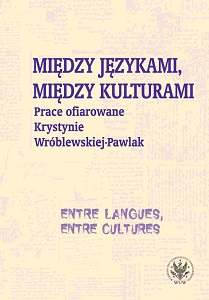O heteromorficznych komunikatach i heterogenicznych kodach
About heteromorphic messages and heterogeneous codes
Author(s): Bożenna Bojar
Subject(s): Theoretical Linguistics, Applied Linguistics, Philology
Published by: Wydawnictwa Uniwersytetu Warszawskiego
Keywords: natural language; artificial language; heterogenous language; heteromorphic message; mixed text; maps; musical notation; road signs; sign language
Summary/Abstract: Languages (codes) can be homo- or heterogeneous, and their messages can be homo- or heteromorphic. The article shows (on the example of the Polish language) that such is the natural language (system) and its realizations (texts). Elements of other natural languages are present in the vocabulary and word-formation system. In messages in the acoustic subcode, suprasegmental acoustic elements with various functions (primarily emotive and conative) and visual elements (facial expressions, gestures, body language) overlap the proper phonic sequence. In written language, by shaping the signal (primarily in printing), apart from the semantic function, other functions (e.g. metainformative, metalingual) are implemented. Natural language texts are oft en mixed texts. For example, they contain elements of other natural and artificial languages, iconic characters and elements that are exponents of various functions, primarily metainformative and metalingual. Th e article also shows the heterogeneous character of artificial languages on the example of a map language, road signs, musical notation and a sign language.
Book: Między językami, między kulturami/Entre langues, entre cultures
- Page Range: 21-34
- Page Count: 14
- Publication Year: 2021
- Language: English, French, Polish
- Content File-PDF

